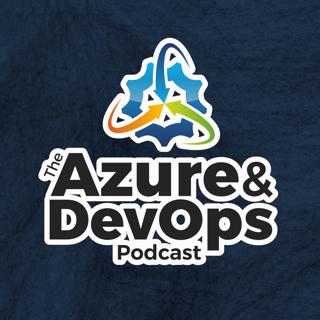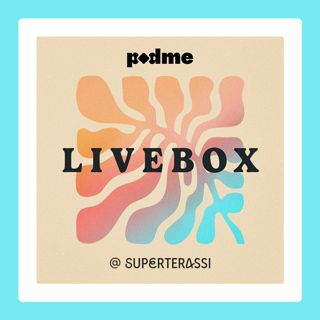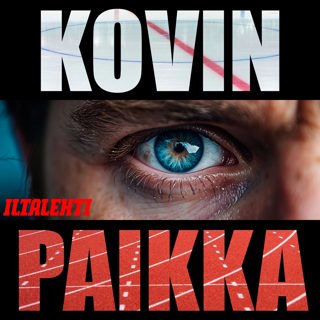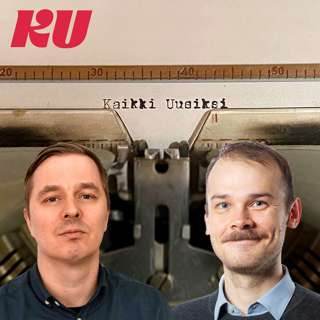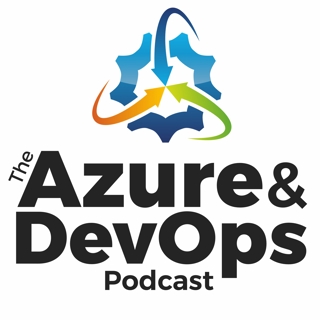
Mohamed Kabiruddin on Migrating to Azure SQL - Episode 181
Mohamed Kabiruddin is a Senior Program Manager in the Azure SQL Product Team and is currently located in Redmond, Washington. Prior to joining the Product Team, he was a Cloud Solution Architect working with enterprise customers in Australia on all things Azure Data & AI. He is very passionate about the data community and loves to be a part of events that provide an opportunity to interact with like-minded data folks. Topics of Discussion: [2:12] What are the high points that have led Mohamed up to what he is doing now for Microsoft in his career? [4:42] Mohamed talks about the migration process and how some of the components fit together. [8:24] What type of schema should they key off of? [10:10] The key is understanding what your data type is, how these map to the cloud services, and how these actually scale on the cloud. [10:59] Mohamed talks about the renaming of Azure’s synapse, and what it means in terms of rebranding. [14:00] What should the average .NET developer really pay attention to of all these investments that are happening? [18:37] What is the most popular option that their customers leverage for SQL databases? [20:37] How long does the auto-resume take? [24:46] Mohamed discusses the SQL Server Management Studio and the tremendous growth of Azure Data Studio. Where really Azure Data Studio shines is with this new persona of developers, database professionals, or data professionals starting to mix and match the way they query and manage databases. Mentioned in this Episode: Architect Tips — New video podcast! Azure DevOps Clear Measure (Sponsor) .NET DevOps for Azure: A Developer’s Guide to DevOps Architecture the Right Way, by Jeffrey Palermo — Available on Amazon! Jeffrey Palermo’s YouTube Jeffrey Palermo’s Twitter — Follow to stay informed about future events! podcast@palermo.network Azure SQL Azure Database Migration Guides Azure Data Studio Want to Learn More? Visit AzureDevOps.Show for show notes and additional episodes.
21 Helmi 202232min

Shawn Wildermuth on Next-gen web services - Episode 180
Shawn Wildermuth has been tinkering with computers and software since he got a VIC-20 back in the early ’80s. He has been a Microsoft MVP, Pluralsight Author, and filmmaker. You can reach him at his blog at wildermuth.com or find out about his film at helloworldfilm.com. Topics of Discussion: [2:51] What were some of the highlights of Shawn’s career? How does his pragmatism come into play when helping developers create projects that actually add value? [5:04] What does Shawn mean when he says he offers real value consulting. [7:43] Shawn gives us the rundown on what’s new in next-generation web services. [13:57] What is the magic of SignalR? [21:04] What does gRPC look like? What are the libraries? [21:30] What are protocol buffers? [23:23] Does Shawn have any favorite gRPC samples? [24:36] Where would Shawn want to see web service APIs like in the future? [28:50] With web service APIs, the normal thing is for every different request, there's a different URL that you call. But for asynchronous queuing, it’s normal to have one queue address and any number of these message types. Yeah. Why the difference? [33:28] Does SignalR have a guaranteed delivery configuration? Mentioned in this Episode: Architect Tips — New video podcast! Azure DevOps Clear Measure (Sponsor) .NET DevOps for Azure: A Developer’s Guide to DevOps Architecture the Right Way, by Jeffrey Palermo — Available on Amazon! Jeffrey Palermo’s YouTube Jeffrey Palermo’s Twitter — Follow to stay informed about future events! podcast@palermo.network Shawn Wildermuth on YouTube Want to Learn More? Visit AzureDevOps.Show for show notes and additional episodes.
14 Helmi 202237min

Shaun Walker on Blazor and Oqtane - Episode 179
Jeffrey welcomes Shaun Walker, creator of Oqtane and also DotNetNuke web application frameworks, which have earned the recognition of being amongst the most pioneering and widely-adopted open-source projects native to the Microsoft platform. He has over 30 years of professional experience in architecting and implementing enterprise software solutions for private and public organizations. Shaun is also currently employed as the CTO of Professional Services for Cognizant. He talks with Jeffrey about Blazor, Oqtane, and what’s next in his professional world. Topics of Discussion: [2:49] Shaun’s claim to fame is creating DOTNETNUKE, a very popular web application framework in 2003. It was one of the first large open-source projects of the Microsoft stack and had a very large community. [5:25] What is Oqtane? [7:37] Jeffrey and Shaun talk about the Built on Blazor website. [9:12] One of the biggest debates is which flavor of Blazor would you be? So, which one would Shaun be? [10:45] It’s kind of unlikely that you would use the Blazor server if you are considering Angular. [14:01] What were the big changes that Shaun has seen in .NET? How has technology evolved? [22:09] Jeffrey and Shaun discuss error boundaries. [27:02] Should we default to always caring about the URL structure? Or should that just be a use case for only that subset of applications that need it? [30:56] Why hasn’t Shaun been a big fan of Google Analytics? [33:36] Does the Oqtane framework build smartphone apps? [36:52] For the people who know how to use C#, is it better to grab an application framework like Oqtane or better to pull in some low code offerings in certain places? Mentioned in this Episode: Architect Tips — New video podcast! Azure DevOps Clear Measure (Sponsor) .NET DevOps for Azure: A Developer’s Guide to DevOps Architecture the Right Way, by Jeffrey Palermo — Available on Amazon! Jeffrey Palermo’s YouTube Jeffrey Palermo’s Twitter — Follow to stay informed about future events! podcast@palermo.network Shaun Walker DNN Oqtane.org .NETFoundationProjectCommittee Oqtane Github repo Oqtane philosophy Error Boundary and Logging in Blazor Activity trend analysis of .NET Foundation member projects Want to Learn More? Visit AzureDevOps.Show for show notes and additional episodes.
7 Helmi 202241min

Jeffrey Palermo on Software Careers - Episode 178
This episode gives the listener a rundown of the categories of work that are required in every software project. Jeffrey discusses a few of the many different types of careers in the software industry, defining what security means to you and your product, and executing your vision. Topics of Discussion: [3:38] Jeffrey names a few of the many roles that may be at a software company: the founder, programmers, product visionary, architect, developers, builders, sellers, project managers, and program managers. [5:00] Specialized job titles are everywhere, and there is no standard job title for people who work in software. [5:18] If it’s a new piece of software, someone needs to effectively write the press release text and market the product. What are the other roles that make up the elements of design? [8:20] Your press release is your vision, and now you can back it up with your design and execution. [9:52] How a person experiences the software is a huge element of the design. [14:49] We have to define what our vision of secure is. [18:00] As your team grows, be conscious about the appropriate time to fill distinct roles. Chances are at the smaller companies, your team members will be doing more than one thing. [19:25] Oftentimes, the testing aspect is split between the people who are working on the envisioning, the selling, and the improving. Mentioned in this Episode: Architect Tips — New video podcast! Azure DevOps Clear Measure (Sponsor) .NET DevOps for Azure: A Developer’s Guide to DevOps Architecture the Right Way, by Jeffrey Palermo — Available on Amazon! Jeffrey Palermo’s YouTube Jeffrey Palermo’s Twitter — Follow to stay informed about future events! podcast@palermo.network Want to Learn More? Visit AzureDevOps.Show for show notes and additional episodes.
31 Tammi 202220min

Bryan Costanich on .NET 6 IoT - Episode 177
This week, Jeffrey welcomes Bryan Costanich, Founder of Wilderness Labs and former VP of Xamarin. Bryan talks with us about the state of .NET, the advantages and disadvantages of moving into the embedded space, and how embedded computing is the new revolution. Bryan is also on a mission to leave the world a little better than he found it. Topics of Discussion: [2:04] Bryan talks about his background and time at Xamarin, Microsoft, and the origins of Wilderness Labs. [4:16] What is the state of .NET? In the embedded system world, what are the realistic options and future in 2022 and beyond? [8:04] What are both the advantages and disadvantages of moving into the embedded space? [11:04] Bryan discusses how a lot of the advantages of microcontrollers moving to embedded are historical in the sense that you are developing for embedded devices that haven’t changed a lot since the ’70s and ’80s. [12:30] Seventy percent of all security bugs aren’t even an issue in .NET. [15:05] Bryan talks about his intent to make it easier for people to use and to create the ideal experience through Xamarin. [15:41] The next phase of humankind’s technological computing journey is embedded computing. This is the new revolution. [16:45] There are three parts of the IoT market: consumer, commercial, and industrial. [20:23] Bryan talks about how Xamarin’s main products are compromised and where they land on the spectrum. He discusses Azure Sphere and Raspberry Pi. [26:29] What exactly does Bryan develop with? He describes his setup. [31:09] Some fun smart chicken coop talk! [34:42] How does crash reporting work in Xamarin? [36:55] In the core compute module, how does one build the enclosure that it snaps into? [39:11] What is the most common product mix? [39:30] When will Xamarin’s products be released? Mentioned in this Episode: Architect Tips — New video podcast! Azure DevOps Clear Measure (Sponsor) .NET DevOps for Azure: A Developer’s Guide to DevOps Architecture the Right Way, by Jeffrey Palermo — Available on Amazon! Jeffrey Palermo’s YouTube Jeffrey Palermo’s Twitter — Follow to stay informed about future events! Wilderness Labs Raspberry Pi Azure Sphere Bryan Costanich Want to Learn More? Visit AzureDevOps.Show for show notes and additional episodes.
24 Tammi 202244min

Jeff Fritz on The state of .NET - Episode 176
This week, Jeffrey welcomes Jeff Fritz to the show. As an experienced developer, technical educator, and PM on the .NET team at Microsoft, Jeff also founded the Live Coders team on Twitch where he regularly livestreams builds of websites and fun applications. The two Jeffs talk about .NET 6, the .NET Conf, Jeff’s passion for getting .NET in education and what that takes, and why C# needs to also be in more standard settings. They also talk about starting simple and building to the complex in education, .NET notebooks, and resources for people to learn, just for the sake of learning. Topics of Discussion: [3:29] Where should one start with the .Net Conf? What were some of Jeff’s biggest moments from the conference? [4:29] Jeff talks about what he likes about the .NET Maui application. [9:29] Why isn’t C# being taught more widely in schools? Jeff says that we need to get C# into colleges and high schools, and make more educational material available for the kids, now that .NET is open source. [11:19] Is .NET ready for education? What are we missing? [13:52] Jeff talks about his class every Monday, C# with CSharpFritz. [20:08] Why does Jeff recommend that programmers learn to learn? [22:28] What is the benefit of being specialized in one area, and what makes up the divide? Is it the applications that people work in? The tools they use? [26:56] Why should we collaborate? [30:53] When we educate people, we should give them the basic feature first, then start making it more complex. [35:11] Does Jeff think that .NET 6.0 is the catalyst that’s needed to get C# into places like code.org? Mentioned in this Episode: Architect Tips — New video podcast! Azure DevOps Clear Measure (Sponsor) .NET DevOps for Azure: A Developer’s Guide to DevOps Architecture the Right Way, by Jeffrey Palermo — Available on Amazon! bit.ly/dotnetdevopsebook — Click here to download the .NET DevOps for Azure ebook! Jeffrey Palermo’s YouTube Jeffrey Palermo’s Twitter — Follow to stay informed about future events! Jeff Fritz: Website | C# with CSharpFritz | Twitter | Twitch .NET for Students Visual Studio GitHub .NET 6.0 .Net Conf .Net Maui Visual Studio Code C#.Net Kubernetes Want to Learn More? Visit AzureDevOps.Show for show notes and additional episodes.
17 Tammi 202240min

Buck Woody on Data Science - Episode 175
This week, Jeffrey is joined by Buck Woody, Applied Data Scientist working on the Azure Data Services team at Microsoft. Buck has over 39 years of professional and practical experience in computer technology and is also a globally sought-after speaker and author. In this jam-packed episode, Buck talks about his passion for data and why it’s important to recognize that data is the central part of anything, which means keeping people employed. He talks about his role in machine learning and AI in Microsoft, and why we have to be extra careful when letting machines make the final call, why data science is useful, and the difference between business intelligence and data science. Buck shares the number one thing he feels developers need to know, and a few free resources that you can use to expand your knowledge and skills. Topics of Discussion: [2:00] Jeffrey welcomes Buck and gives a quick overview of his background and how he got into data and security. Buck has worked with many top companies including IBM, NASA, and started at Microsoft about 16 years ago. [5:00] Jeffrey joined the Red Dog team, which was the early part of Azure. [6:12] What was working in tech and AI back in the 1970s, compared to today? [9:48] How do we take some of the AI technology for granted? [10:04] What is data mining? [15:00] What does Buck feel is the number one thing a developer needs to understand about data and effective queries? [20:44] What is Buck’s definition of Big Data? [22:46] What is the difference between business intelligence and the idea around data science? [24:25] What is the number one question Buck asks when someone tells him they want artificial intelligence? [25:47] Why don’t you need business intelligence to do data science? [26:03] What is the age-old practice of ETL? [27:12] What is source data poisoning, and how does it affect our algorithms? [30:31] It is important for AI to augment human reasoning. Buck and Jeffrey talk about the example of recognizing red vs. green lights. [34:20] Jeffrey and Buck explore the construct of Excel Flash Fill. [37:02] What are the go-to tools that developers should be installing? What are some free Microsoft resources, and what are Cognitive Services? Mentioned in this Episode: Architect Tips — New video podcast! Azure DevOps Clear Measure (Sponsor) .NET DevOps for Azure: A Developer’s Guide to DevOps Architecture the Right Way, by Jeffrey Palermo — Available on Amazon! bit.ly/dotnetdevopsebook — Click here to download the .NET DevOps for Azure ebook! Jeffrey Palermo’s YouTube Jeffrey Palermo’s Twitter — Follow to stay informed about future events! Buck Woody: Twitter | LinkedIn Using Excel Flash Fill Microsoft AI School Azure Cognitive Services Microsoft Tech Community Data Architecture Star Trek Anna Hoffman Want to Learn More? Visit AzureDevOps.Show for show notes and additional episodes.
10 Tammi 202240min

Jimmy Engström on Blazor - Episode 174
This week, Jeffrey is joined by Jimmy Engström, a Senior Developer, author, and speaker. Since he was 7 years old and got his first computer, Jimmy has been on the cutting edge of technology, always developing, and trying new things. When he got wind of Blazor, he immediately realized the potential and adopted it when it was only in beta. Since then, he has been running Blazor in production since it was launched by Microsoft. Jimmy’s passion for the .NET industry and community has taken him all around the world and has even earned him the Microsoft Most Valuable Professional award for the last 8 years in a row. Additionally, Jimmy is the author of Web Development with Blazor and the co-host of Coding After Work; a podcast and stream. In this episode, Jimmy shares what he thinks every developer should know when it comes to Blazor, his favorite Blazor components, insights regarding integrating Blazor into a DevOps environment, his career journey in Blazor, and about his book, Web Development with Blazor, A hands-on guide for .NET developers to build interactive UIs with C#. Topics of Discussion: [:36] About The Azure DevOps Podcast, Clear Measure; the new video podcast Architect Tips; and Jeffrey’s offer to speak at virtual user groups. [1:15] About today’s episode with Jimmy Engström. [2:20] Jeffrey welcomes Jimmy to the show and congratulates him on his book on Blazor. [2:50] Jimmy shares his career background and his professional body of work. [6:55] When did Jimmy become interested and invested in Blazor? What led him to writing a book about it? [11:29] What should every developer know about Blazor? [18:44] A word from Azure DevOps Podcast’s sponsor: Clear Measure. [19:16] Jimmy talks Blazor architecture and APIs. [21:59] Blazor components that Jimmy and his team especially love using. [25:15] Jimmy’s opinions on Radzen and Telerik. [26:25] Jimmy shares when he first adopted Blazor and the big changes he has noticed as he’s moved from .NET 5 to .NET 6. [29:36] Jimmy’s insights regarding integrating Blazor into a DevOps environment. [32:50] Where to find Jimmy online. [35:09] Jeffrey thanks Aaron Stannard for joining the podcast. Mentioned in this Episode: Architect Tips — New video podcast! Azure DevOps Clear Measure (Sponsor) .NET DevOps for Azure: A Developer’s Guide to DevOps Architecture the Right Way, by Jeffrey Palermo — Available on Amazon! bit.ly/dotnetdevopsebook — Click here to download the .NET DevOps for Azure ebook! Jeffrey Palermo’s YouTube Jeffrey Palermo’s Twitter — Follow to stay informed about future events! Jimmy Engström’s Microsoft Profile Jimmy Engström’s Twitter @EngstromJimmy EngstromJimmy.com Jimmy Engström’s LinkedIn Web Development with Blazor, A hands-on guide for .NET developers to build interactive UIs with C#, by Jimmy Engström (on PacktHub) Web Development with Blazor: A hands-on guide for .NET developers to build interactive UIs with C#, by Jimmy Engström (on Amazon) Jimmy Engström on Sessionize CodingAfterWork.com Blazor SignalR Blazm.net Infragistics Telerik Radzen Want to Learn More? Visit AzureDevOps.Show for show notes and additional episodes.
3 Tammi 202236min
